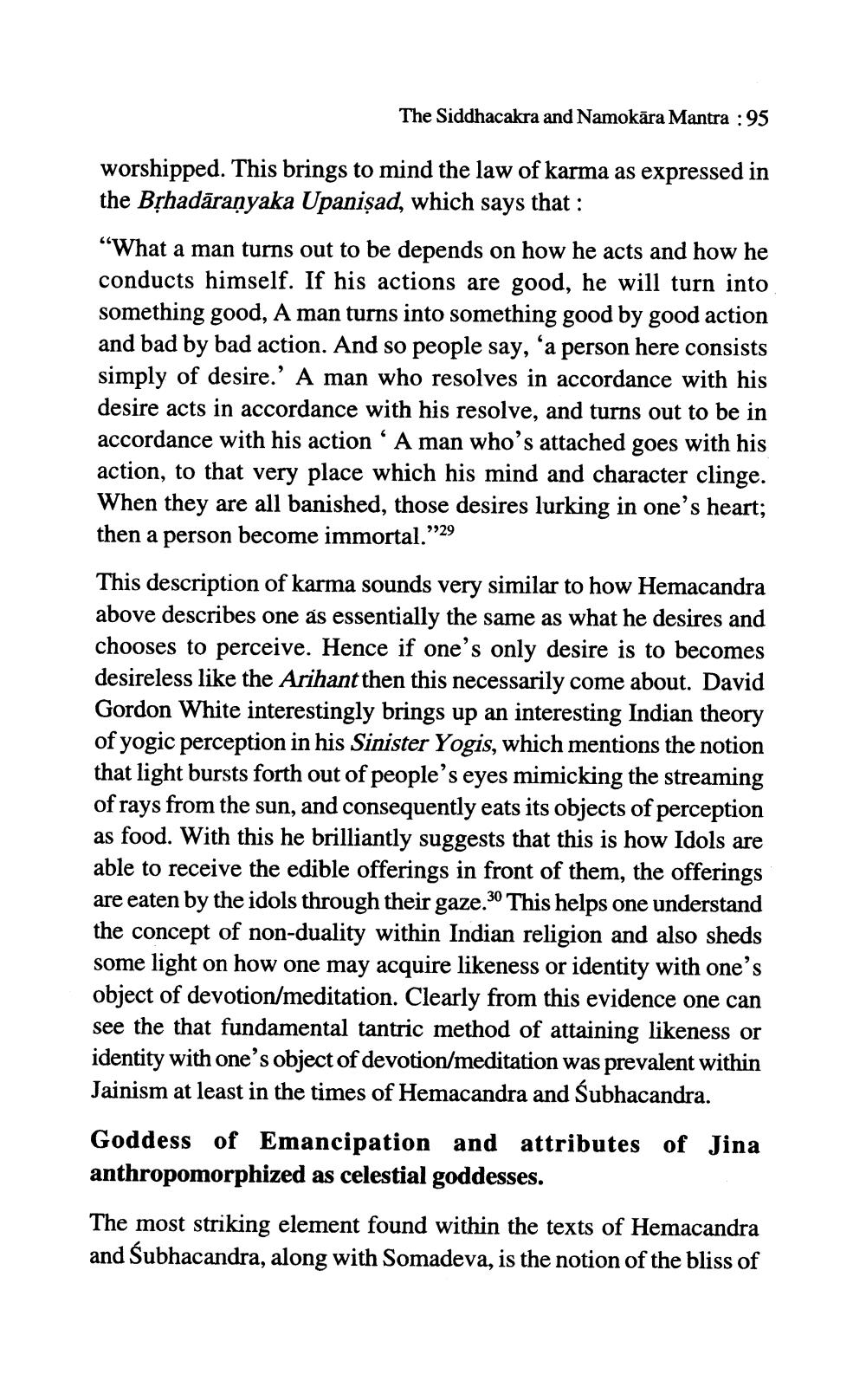________________
The Siddhacakra and Namokāra Mantra : 95
worshipped. This brings to mind the law of karma as expressed in the BỊhadāraṇyaka Upanişad, which says that : “What a man turns out to be depends on how he acts and how he conducts himself. If his actions are good, he will turn into something good, A man turns into something good by good action and bad by bad action. And so people say, 'a person here consists simply of desire.' A man who resolves in accordance with his desire acts in accordance with his resolve, and turns out to be in accordance with his action ' A man who's attached goes with his action, to that very place which his mind and character clinge. When they are all banished, those desires lurking in one's heart; then a person become immortal."29
This description of karma sounds very similar to how Hemacandra above describes one as essentially the same as what he desires and chooses to perceive. Hence if one's only desire is to becomes desireless like the Arihant then this necessarily come about. David Gordon White interestingly brings up an interesting Indian theory of yogic perception in his Sinister Yogis, which mentions the notion that light bursts forth out of people's eyes mimicking the streaming of rays from the sun, and consequently eats its objects of perception as food. With this he brilliantly suggests that this is how Idols are able to receive the edible offerings in front of them, the offerings are eaten by the idols through their gaze.30 This helps one understand the concept of non-duality within Indian religion and also sheds some light on how one may acquire likeness or identity with one's object of devotion/meditation. Clearly from this evidence one can see the that fundamental tantric method of attaining likeness or identity with one's object of devotion/meditation was prevalent within Jainism at least in the times of Hemacandra and Subhacandra. Goddess of Emancipation and attributes of Jina anthropomorphized as celestial goddesses.
The most striking element found within the texts of Hemacandra and Subhacandra, along with Somadeva, is the notion of the bliss of




